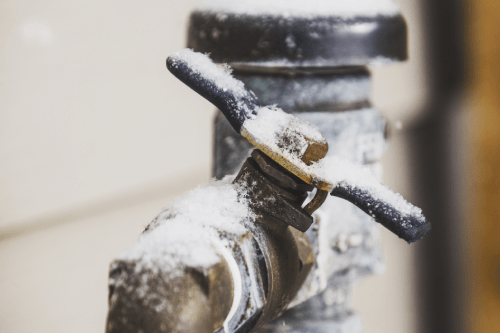Protecting Your Pipes from Cold Weather: Effective Strategies
Protecting Your Pipes from Cold Weather: Effective Strategies
Blog Article
The publisher is making a number of good annotation on the subject of How To Avoid Freezing Pipes as a whole in this content down the page.

Cold weather can ruin your pipes, specifically by freezing pipelines. Right here's just how to stop it from taking place and what to do if it does.
Intro
As temperatures drop, the risk of icy pipes boosts, potentially bring about pricey repair work and water damage. Recognizing just how to avoid frozen pipelines is vital for house owners in cold environments.
Comprehending Icy Pipes
What creates pipes to ice up?
Pipelines freeze when revealed to temperatures listed below 32 ° F (0 ° C) for expanded periods. As water inside the pipelines freezes, it broadens, taxing the pipe walls and possibly creating them to burst.
Dangers and problems
Icy pipes can cause water supply disruptions, residential property damages, and pricey repairs. Burst pipes can flood homes and cause extensive structural damage.
Signs of Frozen Pipes
Recognizing icy pipelines early can prevent them from breaking.
Just how to recognize frozen pipes
Look for lowered water circulation from faucets, unusual smells or noises from pipelines, and visible frost on exposed pipes.
Prevention Tips
Insulating vulnerable pipes
Cover pipes in insulation sleeves or make use of warm tape to protect them from freezing temperature levels. Focus on pipelines in unheated or exterior locations of the home.
Heating strategies
Keep indoor rooms appropriately warmed, especially locations with pipes. Open closet doors to allow warm air to flow around pipes under sinks.
Safeguarding Exterior Pipes
Garden hose pipes and outside faucets
Separate and drain pipes yard hoses before winter season. Set up frost-proof faucets or cover outside taps with shielded caps.
What to Do If Your Pipelines Freeze
Immediate activities to take
If you believe icy pipelines, maintain taps available to relieve pressure as the ice thaws. Make use of a hairdryer or towels taken in hot water to thaw pipes slowly.
Long-Term Solutions
Structural adjustments
Take into consideration rerouting pipelines away from exterior wall surfaces or unheated areas. Include extra insulation to attic rooms, cellars, and crawl spaces.
Upgrading insulation
Buy top notch insulation for pipes, attic rooms, and walls. Proper insulation assists keep constant temperature levels and lowers the danger of icy pipelines.
Final thought
Stopping icy pipes calls for positive actions and quick feedbacks. By understanding the causes, indicators, and preventive measures, house owners can protect their plumbing during winter.
5 Ways to Prevent Frozen Pipes
Drain Outdoor Faucets and Disconnect Hoses
First, close the shut-off valve that controls the flow of water in the pipe to your outdoor faucet. Then, head outside to disconnect and drain your hose and open the outdoor faucet to allow the water to completely drain out of the line. Turn off the faucet when done. Finally, head back to the shut-off valve and drain the remaining water inside the pipe into a bucket or container. Additionally, if you have a home irrigation system, you should consider hiring an expert to clear the system of water each year.
Insulate Pipes
One of the best and most cost-effective methods for preventing frozen water pipes is to wrap your pipes with insulation. This is especially important for areas in your home that aren’t exposed to heat, such as an attic. We suggest using foam sleeves, which can typically be found at your local hardware store.
Keep Heat Running at 65
Your pipes are located inside your walls, and the temperature there is much colder than the rest of the house. To prevent your pipes from freezing, The Insurance Information Institute suggests that you keep your home heated to at least 65 degrees, even when traveling. You may want to invest in smart devices that can keep an eye on the temperature in your home while you’re away.
Leave Water Dripping
Moving water — even a small trickle — can prevent ice from forming inside your pipes. When freezing temps are imminent, start a drip of water from all faucets that serve exposed pipes. Leaving a few faucets running will also help relieve pressure inside the pipes and help prevent a rupture if the water inside freezes.
Open Cupboard Doors
Warm your kitchen and bathroom pipes by opening cupboards and vanities. You should also leave your interior doors ajar to help warm air circulate evenly throughout your home.

I hope you enjoyed reading our section on How To Avoid Freezing Pipes. Thanks for taking a few minutes to read through our piece. Liked our blog posting? Please share it. Let others locate it. I take joy in your readership.
Get Quote Now Report this page